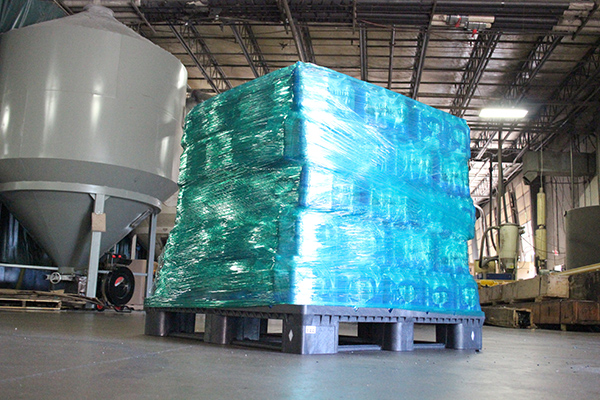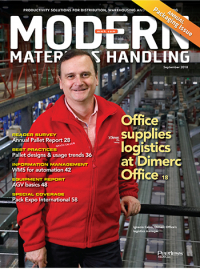Five Pallet Design and Usage Trends
The latest pallet trends are focused on enhancing strength, durability and sustainability.
Pallets and trends. Two words that most would assume don’t belong together. And yet, a few new developments are at work in the pallet world.
As found in the latest Peerless Research Group pallet usage survey, most respondents consider a combination of price, strength, durability and reusability when making their pallet purchasing decisions. And, while wood reigns supreme, plastic and composite materials are on the rise.
In recognition of those purchaser priorities, manufacturers of pallets in all three of those material types are revisiting their designs and processes as they seek to ensure their pallets last longer and complete more return trips.
As a result, the latest trends include improvements for greater strength at lighter tare weights, increased stiffness to accommodate the uptick in automation use, and experimentation with alternative materials for better sustainability.
Further, third-party service providers offering pallet pooling are also supporting sustainability efforts by using their own customer data to foster greater collaboration to reduce transportation costs.
Here, we offer a tour of what’s trending in today’s pallet designs and usage practices.
Increasing automation drives increase in plastic pallet use
As more and more distributors and warehouses struggle with ongoing limited workforce availability, they’re increasingly turning to automated materials handling systems within their facilities. That, says Ryan Roessler, plastic pallets product manager at ORBIS, is the No. 1 reason more companies are taking a closer look at replacing wood with reusable plastic pallets.
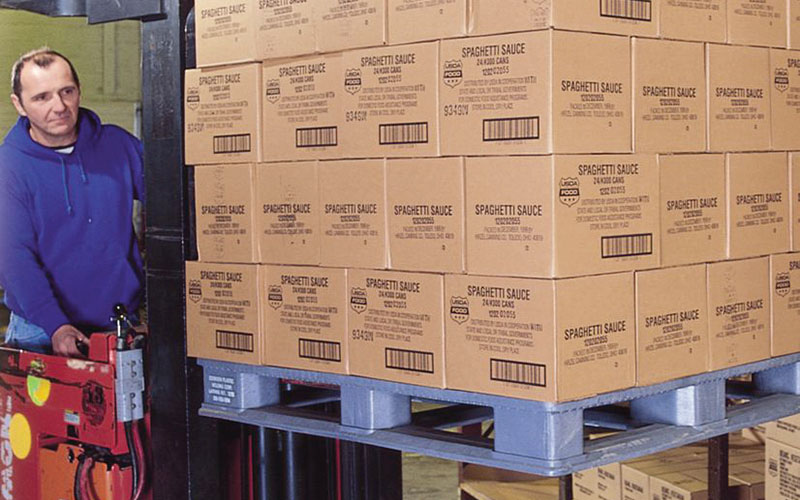
“Because plastic pallets come out of a mold, they’re going to be identical every single time,” Roessler says. “Whereas wood boards can be slightly different sizes, the sensors are likely to have an issue reading data or detecting an edge. Or, if a piece were to chip off—which happens more frequently with wood—it could jam the automation equipment. Either way, the automated system is going to stop, resulting in downtime and its associated costs.”
Roessler advises companies to consider the design of the plastic pallet, along with that of the automated system, simultaneously. “If you’re going down the path of automating your system, the pallet is going to be extremely important. Some companies might think of it as an afterthought, but it’s really what drives all the automation equipment.”
ORBIS recommends that the pallet manufacturer and automation supplier work together to determine the ideal pallet, then test to ensure the two will work together.
“Automated systems have certain deflection limits for the pallets, meaning the amount of bowing caused by the weight of the load,” Roessler explains. “Too much can cause the pallet load to catch somewhere within the automation, so it’s important to know the maximum pallet deflection limit as specified by the equipment manufacturer.”
Further, for operations looking at automatic guided vehicles for pallet transport, Roessler advises confirming that fork tunnel openings are accessible by the vehicle.
Plastic pallets re-engineered for maximum strength-to-weight ratios
For supply chains that have both automated and manual interaction with plastic pallets, finding the optimal strength-to-weight pallet design ratio is key to minimizing the risk of worker injury and fatigue, says Jason Grasso, key account manager at Flexcon.
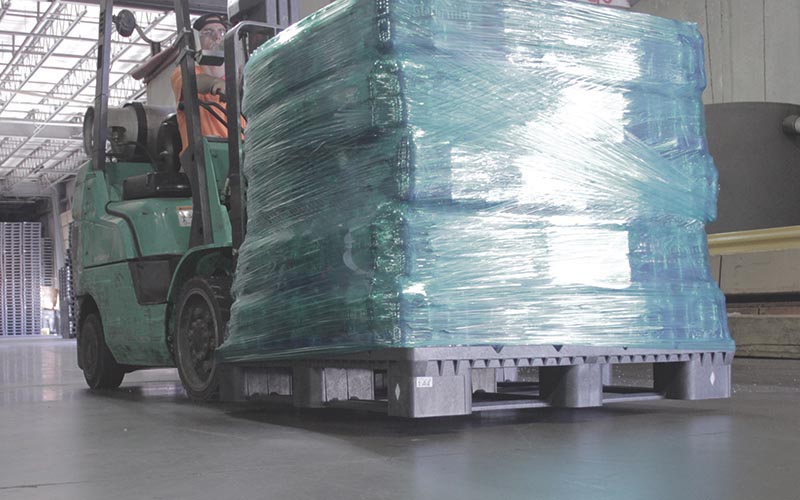
“We recently changed the manufacturing process on one of our 40 x 48-inch pallets, switching over from low-pressure to high-pressure injection molding,” Grasso explains. “Because the molecules themselves are more densely packed, the material becomes heavier per cubic inch, yet stronger overall. That enabled us to redesign the structure of the pallet and eliminate more than 5 pounds of weight over the previous model.”
Since the pallet now weighs 44 pounds—a 10% weight decrease—it makes it easier for operators to handle and cuts down on potential ergonomic concerns.
“Further, the new molding process produces an overall stronger and more durable pallet that reduces the risk of breakage and downtime,” Grasso adds. “If you’re going to invest in a reusable plastic pallet system and deploy it throughout your operations—which we’re seeing more of our customers do—it’s a big expenditure. You want those pallets to last as long as possible yet accommodate multiple types of handling processes. Pallets with increased strength-to-weight ratio help companies achieve that objective.”
Custom wood pallet designs providing increased strength, stiffness
To ensure that wood pallets have adequate strength and stiffness to accommodate new, higher density storage equipment—such as multi-deep, drive-in storage racks, conveyance and even automation—more customized designs are being created, even for standard sizes like 40 x 48-inch.
Ralph Rupert, manager of unit load technology for Millwood, says that as operations attempt to optimize their storage capacity, they likely need a new pallet standard as well.
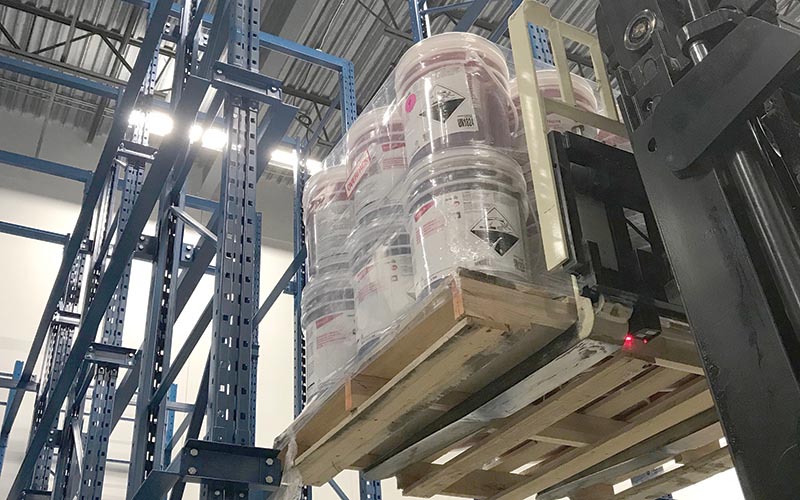
“In drive-in rack, for example, the pallets are typically spanned across the deck boards,” Rupert explains. “But the deck boards are the weakest part of a pallet, so a three-stringer pallet that’s currently being used to store products on the floor will likely break if used in the drive-in rack. Adding an additional stringer increases the load capacity by a third; alternately we can look at using more or thicker deck boards.”
Rupert also stresses that if a new type of pallet is required for a new storage system, efficiencies will be gained and confusion minimized if the same pallet is deployed throughout the warehouse—and possibly even the supply chain.
“If you don’t, you’ll be transferring from one pallet style to another to use your new system, which takes manpower and time,” Rupert notes. “But it can also be expensive to essentially throw away the pallets you’ve been using. The most cost effective approach is to consult with the pallet supplier and the racking supplier to ensure both work together before installation.”
Experimentation with new materials
In Marshall White’s opinion, the desire of companies to achieve greater sustainability is driving some of the most creative pallet developments.
“Most companies within supply chains genuinely want to reduce their environmental impact, and secondarily, they generally do become more efficient when they’re more sustainable,” says White, the president of White & Company. (White also emphasizes that when seeking such gains, the pallet must be considered just a part of the whole supply chain, which also includes packaging and handling equipment.)
Specific to pallets, however, White says manufacturers are beginning to experiment with different natural materials that are more sustainable, recyclable and
biodegradable.
“Fibers from banana trees and hemp, for example, are from sources that grow quickly and offer higher yields than trees. That’s because forest can be rotated every 10 years, but once banana trees stop producing they are otherwise useless, and hemp can be rotated every six months,” White explains. “Companies are molding these alternative fibers with or without adhesives into pallet form then testing to essentially try to improve on Mother Nature.”
Still, other manufacturers are adding coatings such as urethane to wood to increase a pallet’s durability, make it easier to clean and improve its fire resistance. White is also seeing new formulations of plastic and wood composites.
“However, while these coatings and blends are intended to increase performance, they may or may not impact the recyclability of the material itself,” he cautions.
“Ultimately, when it comes to sustainability, it’s important to keep in mind that to extract fibers from different sources or combine ingredients and mold them into pallet shape requires energy to be expended,” White adds. “Therefore, that process may or may not contribute to overall sustainability goals.”
Pooling services provide supply chain visibility, support collaboration
Managing more than 600 million assets across 60 different countries, one of the key trends observed at CHEP North America, a Brambles company, is its customers seeking more end-to-end, holistic solutions that better serve their supply chains, says Brandon D’Emidio, director of product management and innovation.
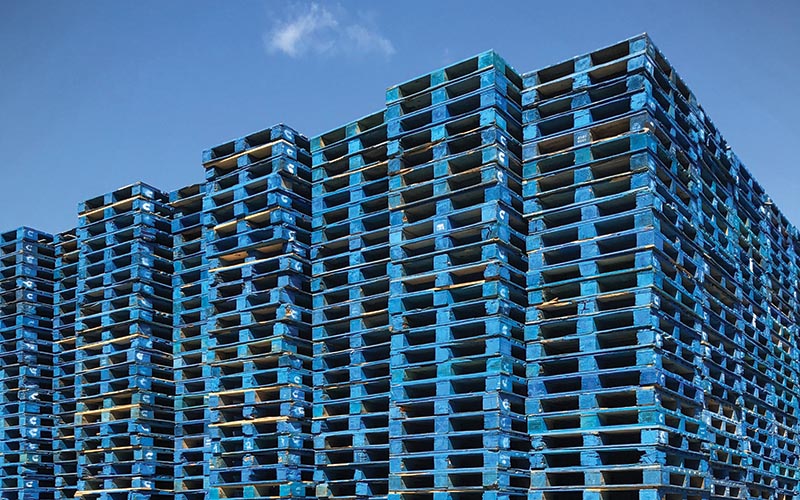
“As transportation costs continue to impact overall industry costs, we’re offering ways for our customers to collaborate to drive better value for everyone,” D’Emidio explains. “Because we work with retailers and manufacturers, it’s easy for us to facilitate joint business planning collaboration projects between both ends of the supply chain.”
To enable such partnerships, CHEP is working with a sister company on digital intelligence software resources to monitor and track temperature and location data, and to cut mileage out of transportation loops.
“For example, if a retailer is returning pallets to us, instead of driving back to their retail distribution center empty, perhaps we have a different customer—such as a manufacturing facility—within their route,” D’Emidio says.
“Through the software, we can help them find a freight connection that enables us to load our pallets into the back of their truck, and they drop it off for us; so instead of driving 100 miles empty, they’re only driving 5 miles empty,” he says.
“By leveraging our data, we also have the ability to connect multiple customers from similar or different industries to optimize load fill and transport capacity,” adds D’Emidio. “Reducing empty miles cuts freight costs and carbon emissions, while making the transportation more beneficial for everybody.”
Companies mentioned in this article:

Article Topics
Shipping Pallets News & Resources
Two voices of reason on pallet materials Pallet recycler and services company PLA appoints Steve Clark as CEO Cobot as key ingredient for palletizing efficiency CHEP appoints Xavier Garijo to newly created CEO Americas position Pallet company Kamps announces executive team changes PLA names Jenny Bedard as new CFO Moving pallets at Aurobindo More Shipping PalletsLatest in Materials Handling
NetLogistik partners with Vuzix subsidiary Moviynt to offer mobility solutions for warehouses Materials Handling Robotics: The new world of heterogeneous robotic integration Lucas Watson appointed CSO for Körber’s Parcel Logistics business in North America Hyster recognizes Dealers of Distinction for 2023 Carolina Handling names Joe Perkins as COO C-suite Interview with Keith Moore, CEO, AutoScheduler.AI: MODEX was a meeting place for innovation Walmart deploying autonomous lift trucks at four of its high-tech DCs More Materials HandlingAbout the Author
Subscribe to Materials Handling Magazine

Find out what the world's most innovative companies are doing to improve productivity in their plants and distribution centers.
Start your FREE subscription today.
April 2024 Modern Materials Handling

Latest Resources


